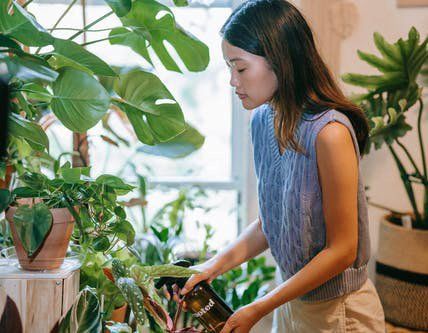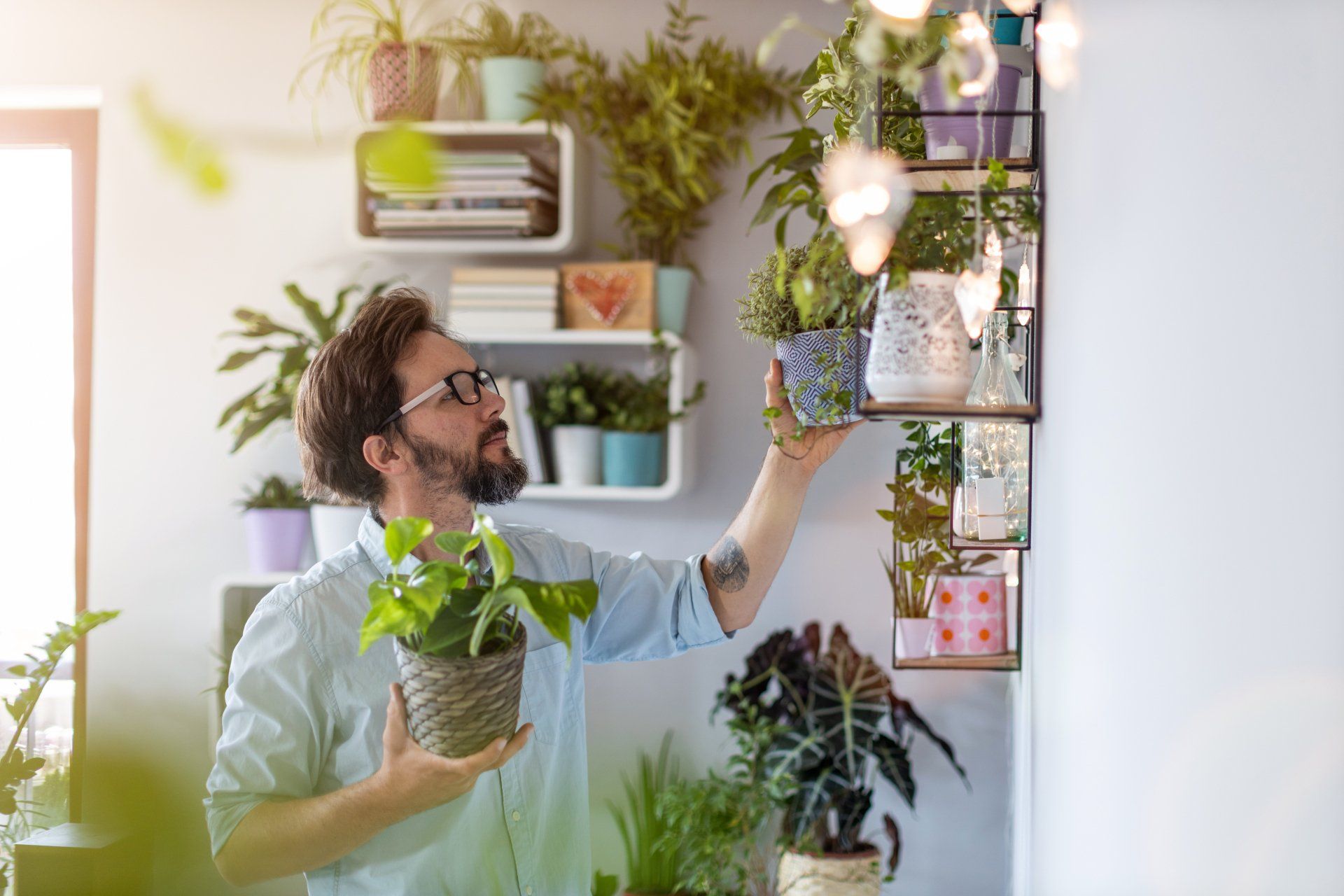Better Living with Houseplants
We should all have houseplants! Not only do indoor plants add natural color and vibrance to interiors, but they also have an abundance of healing powers and air quality improving capabilities.
Houseplants have the magical ability to clean pollutants from the air so that the air inside your home is fresh and clean. The more houseplants you can incorporate into your interior space, the better!
In hospital settings, researchers have found that patients heal faster and have a better overall positive attitude about recovering and healing if they have access to windows where they can look outside and enjoy the sights and sounds of nature. When patients are located in rooms where there are no windows, houseplants are often implemented to liven up the space and bring elements of nature inside to the patients.

Watering and Fertilizing
The easiest way to test whether you need to water your plants or not is to stick your finger deep into the soil and feel if the soil is damp. If it is damp to the touch, you usually do not need to add more water at that time. If the soil feels dry, give your plant a good watering. Watering should be done weekly or as often as twice a week, for most plants, unless you own plants that prefer dry soil.
The most common mistake made with houseplants is overwatering. Plants do not like soggy soil which starves them for oxygen. They often will develop limp discolored leaves if you overwater them. Soggy plants can become susceptible to disease or root rot, and your soil can actually start growing mold, yuck! It is better to err on the side of too dry than too wet.
If you are transplanting your houseplants into a different pot, go ahead and mix some fertilizer in with the fresh soil to start your plants out in a nutrient-rich environment. Houseplants depend on you to provide them with the nutrition that they need since they can’t spread their roots out in search of food like they do in the wild.
Give Them the Right Size Pot
Just like your family needs the right size home to live comfortably, your houseplants need the right size pot in order to stretch out their roots, or else they will get cramped and become root-bound. The general rule of transplanting is to find a pot that is 2” to 3” diameter larger than the pot your plants are in currently. You can always upgrade to a larger pot later if you expect that your houseplant will experience substantial growth.

Other Considerations for Caring for Your Houseplants
Determine the lighting needs for your houseplants and place them in the appropriate areas of your home. If getting sufficient light in your home is difficult, consider purchasing a grow light. Keep an eye out for bugs like aphids, mealybugs, whiteflies, and spider mites. Houseplants can become infested with bugs just like your outdoor plants! If you see bugs, spray your houseplant with an organic, all-natural
plant soap.
If you place your plants near a windowsill, give them a quarter turn every week or two so that they grow evenly. Plants reach toward the sun and can start to grow at an angle if you don’t rotate them regularly. If you notice that your plants are getting leggy and are leaning too much, this could mean they are not getting adequate sunlight and you may need to supplement your natural light source with a grow light.
Introduce a little natural ambiance in your home or office by incorporating live plants into your interior décor. Not only do they beautify a space, but they also keep the air clean and healthy so you can breathe easier!









